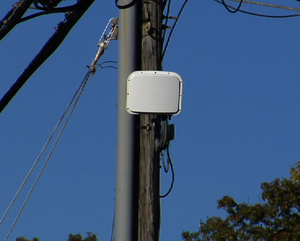What started as a way to reduce risk to workers, reduce long-term cost to traffic signal  systems, and increase information engineers use to ease traffic congestion has become a regional application for the NC Department of Transportation.
systems, and increase information engineers use to ease traffic congestion has become a regional application for the NC Department of Transportation.
City Traffic Engineer, Rik DiCesare, brought radar detection technology to Greenville as an option to typical inductance loop detection systems (the electric wires cut into the pavement at traffic signals). Special radar emitting devices aimed at the intersection provide more benefits of detecting traffic than the traditional loop detectors.
“We did a great deal of research and were very impressed with the technical applications of the product and its pricing structure,” said DiCesare. “We purchased one as a replacement to cover the potential loss of a loop which typically can happen during construction or repaving operations. NCDOT attended the demonstration we coordinated, expressed interest in the product, and decided to test it in Washington. They have since replaced the loops with this equipment at the intersection of Arlington and Evans as their first site in Greenville and are exploring similar opportunities state-wide.”
The system is sensitive enough to detect pedestrians and bicycles – thus making it possible to utilize the data to create better flow of traffic for all. The gathering of this type of data, as well as vehicle counts, is also important because the local Metropolitan Planning Organization will pay a portion of the cost for systems which gather this type of information.
Installation is easier and safer; instead of having to block off lanes of traffic to saw cut and install the loops in pavement, crews simply attach the detectors to existing poles at the intersection. They then create the detection zones using laptop computers connected to the signal controller cabinet.
Initial costs are similar to traditional loop technology; however, additional cost savings are achieved by avoiding having to replace loops multiple times (as is often the case). Look for more of these systems to go into Greenville intersections as the existing loops need to be replaced or are disrupted by construction.
###COG###